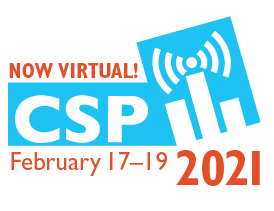Presentation Tips
Effective presentations make learning and technical advances more likely. They also enhance the perception of the presenter in the eyes of the professional community. Use the following guidelines to make your presentation grab attendees’ attention.
“ Your objective is to engage the audience and have them understand your message.
Preparation
Content organization
- Make sure the audience walks away understanding the following:
- What is the problem and why?
- What has been done about it?
- What is the presenter doing (or has done) about it?
- What additional value does the presenter’s approach provide?
- Where do we go from here?
- Carefully budget your time, especially for short (e.g., 15-minute) presentations.
- Allow time to describe the problem clearly enough for the audience to appreciate the value of your contribution.
- Leave enough time to present your own contribution clearly.
- Put your material in a context the audience can relate to. It’s a good idea to aim your presentation at colleagues who are not familiar with your research area. Your objective is to communicate an appreciation of the importance of your work.
- Give references and a way to contact you so those interested in the theoretical details can follow up.
Preparing effective displays
- Keep it simple. Fancy designs or color shifts can make the important material hard to read.
- Use at least a 24-point font so everyone in the room can read your material. Never use a photocopy of a standard printed page as a display.
- Try to limit the material to eight lines per slide, and keep the number of words to a minimum. Summarize the main points.
- Limit the tables to four rows/columns for readability. Sacrifice content for legibility. Many large tables can be displayed more effectively as a graph.
- Don’t put many curves on a graphical display; busy graphical displays are hard to read. Also, label your graphs clearly with big, readable type.
- Use easily read fonts. Simple sans serif fonts such as Arial are easier to read than fancier ones like Times Roman or Monotype Corsiva. Don’t use italic fonts.
- Light letters (yellow or white) on a dark background (e.g., dark blue) often will be easier to read when the material is displayed on LCD projectors.
- Use equations sparingly, if at all. Audience members not working in the research area can find them difficult to follow as part of a rapidly delivered presentation. Avoid derivations and concentrate on presenting what your results mean. The audience will concede the proof and those who really are interested can follow up with you.
- Don’t fill up the slide. The peripheral material may not make it onto the display screen, especially the material on the bottom of a portrait-oriented transparency.
- Identify the journal when you give references. Smith, Bcs96 clues the reader that the article is in a 1996 issue of Biometrics, and is much more useful than just Smith 1996.
- Finally, always preview your presentation.
Timing your talk
Your objective is to engage the audience and have them understand your message. Think in terms of what it would take if you were giving (or, better, listening to) the last talk in the last session of the last day. This means the following:
- Present only as much material as can reasonably fit into the time allotted. Generally, that means one or fewer slides per minute.
- Talk at a pace everybody in the audience can understand. Speak slowly, clearly, and loudly, especially if your English is heavily accented.
- Practice, practice, practice. Ask a colleague to judge your presentation, delivery, clarity of language, and use of time.
- Balance the amount of material you present with a reasonable pace of presentation. If you feel rushed when you practice, then you have too much material. Budget your time to take a minute or two less than your maximum allotment.
The Presentation
- Log in early to check your camera and microphone.
- Make your displays legible.
- Don’t apologize for incomplete results. Researchers understand all research continues. It is okay to say, “Work is ongoing.”
When Finished
- Thank the audience members for their attention.
- Open the floor to questions.
